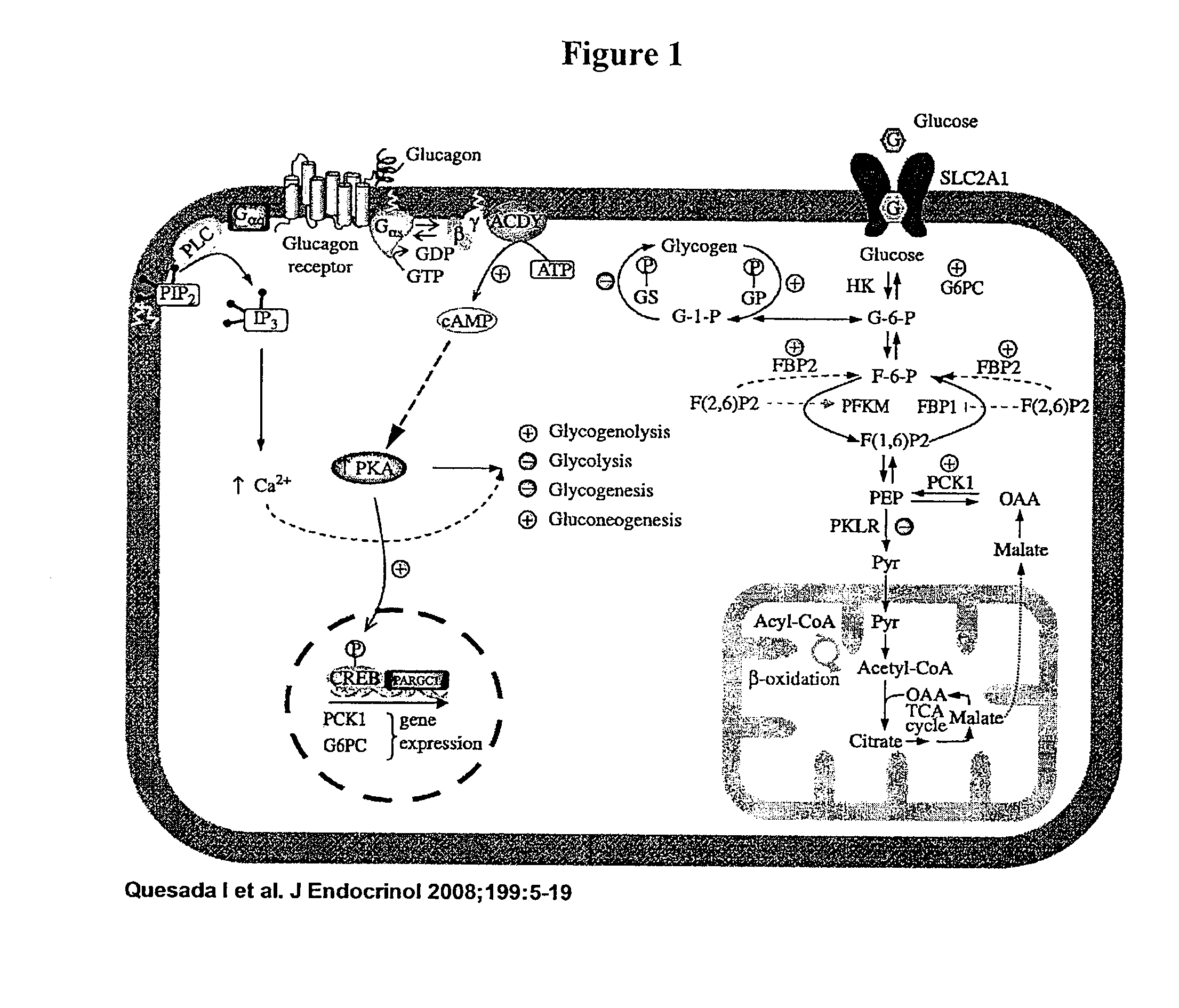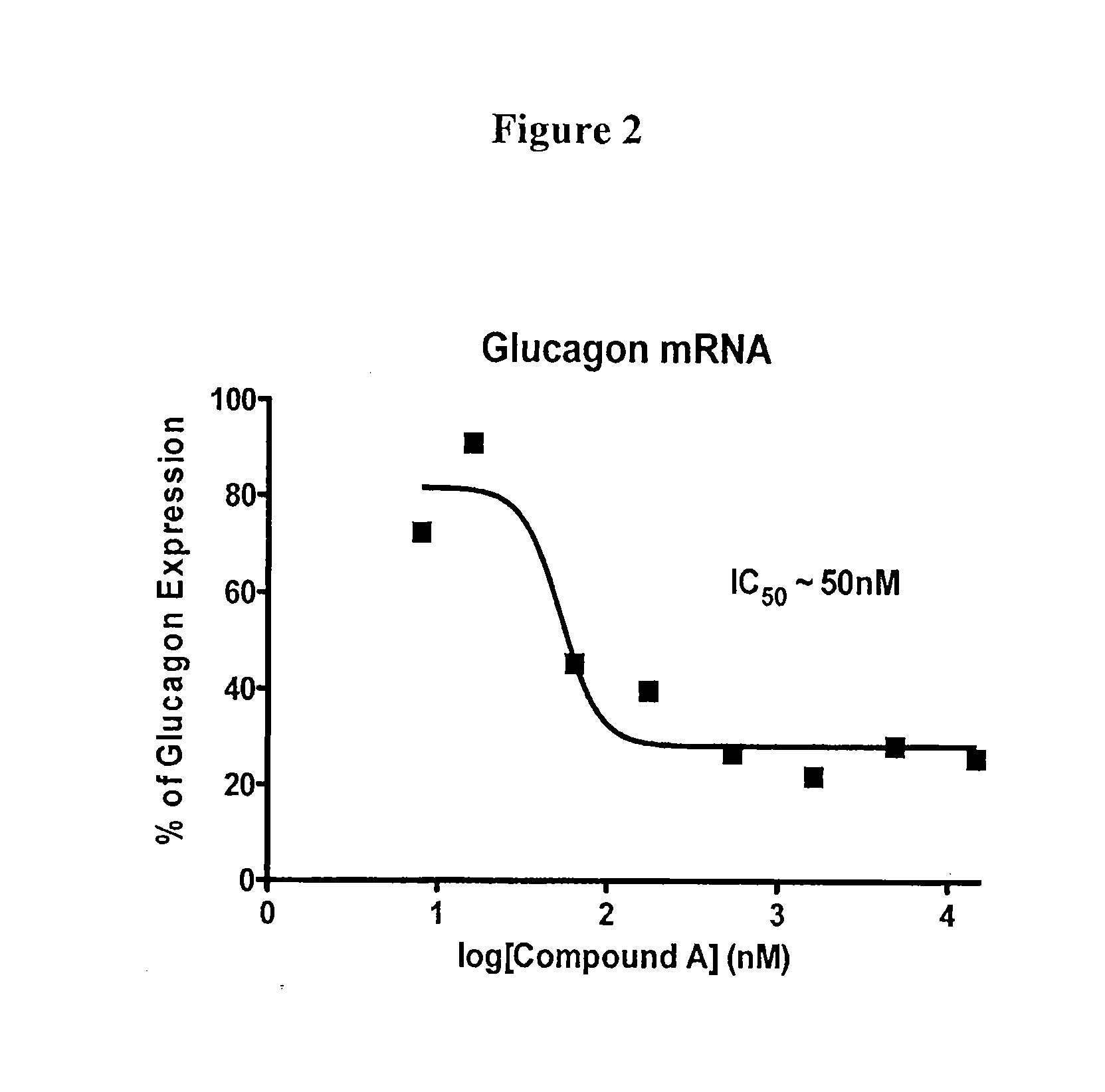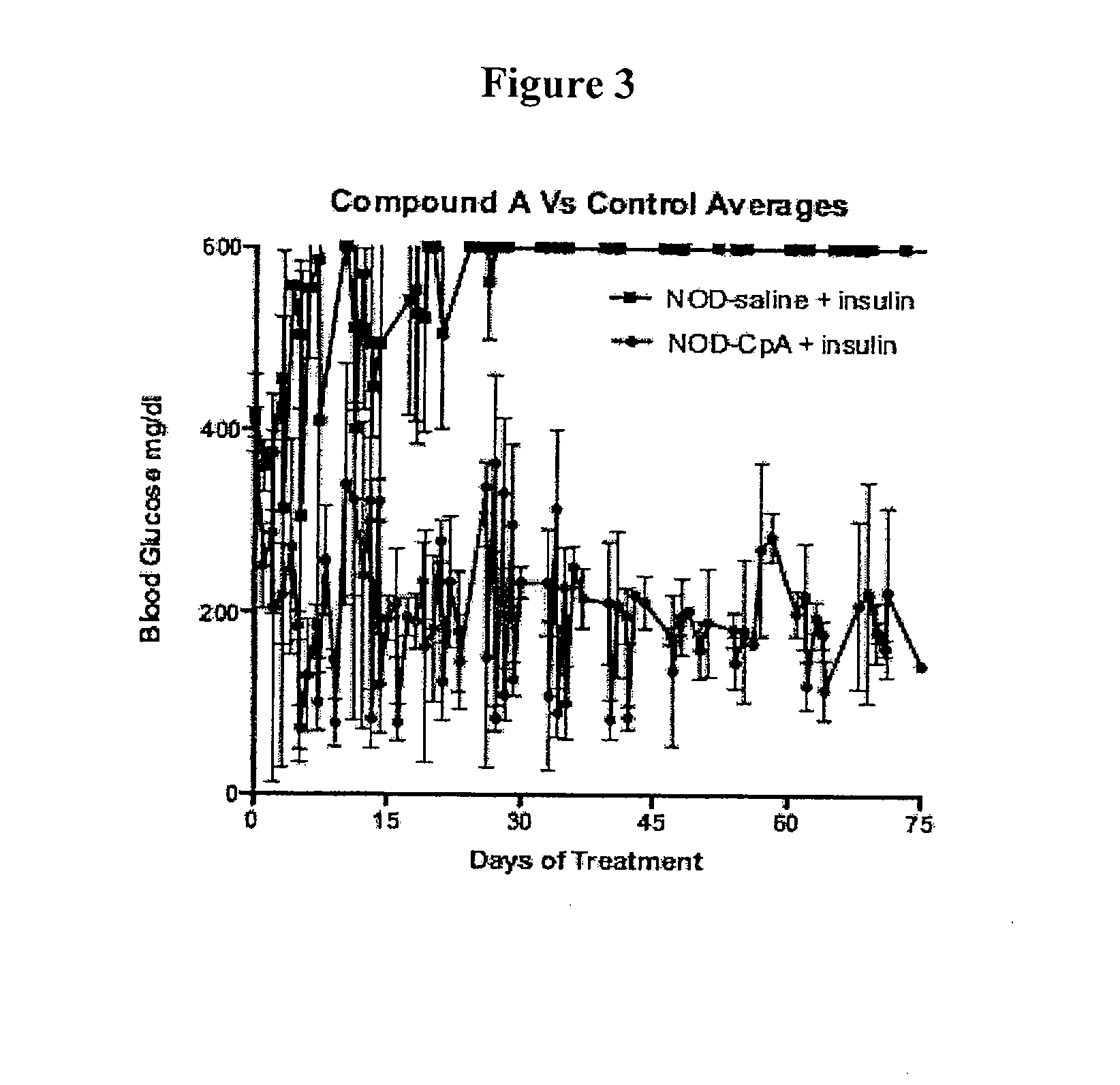Compositions and methods to treat the bihormonal disorder in diabetes
a bihormonal disorder and diabetes technology, applied in the field of glucose homeostasis, can solve the problems of lifelong hyperinsulinemia, inappropriate hyperglucagonemia, and poorly understood biochemistry of human islets, and achieve the effects of normalizing glycated hemoglobin (hgalc) levels, advanced glycation end-products, and normalizing blood glucose levels in mammals
- Summary
- Abstract
- Description
- Claims
- Application Information
AI Technical Summary
Benefits of technology
Problems solved by technology
Method used
Image
Examples
example 1
Screening of Compound Library to Identify Compounds that Inhibit Glucagon Secretion
[0169]InR1G9 cells are glucagon secreting hamster islet cells (Takaki et al., 1986, In Vitro Cell. & Dev. Biol. 22:120) that exhibit characteristics of human islet α cells (e.g., response to insulin and known activators of glucagon secretion). Because InR1G9 cells share the functional characteristics of human islet α cells, InR1G9 cells are used as a reliable model for predicting human islet a cell responses in vivo.
[0170]InR1G9 cells were used to screen ˜200,000 compounds from the University of Texas Southwestern (UTSW) chemical library to identify compounds that inhibit glucagon secretion. This compound library encompasses ˜200,000 synthetic compounds that represent a large chemical space from several commercial vendors, including 1,200 marketed drugs from the Prestwick Chemical Library®, and 600 compounds that went to pre-clinical tests from the NIH library.
[0171]A cell-based method for compound sc...
example 2
Quantitative Reverse-Transcriptase Polymerase Chain Reaction (qRT-PCR) Analysis of Glucagon Gene Expression Inhibition by Compound A in InR1G9 Cells
[0173]Quantitative reverse-transcriptase polymerase chain reaction (qRT-PCR) was used to test whether Compound A could inhibit expression of the endogenous glucagon gene in InR1G9 cells.
[0174]For example, InR1G9 cells were cultured in Dulbecco's Modified Eagle's Medium (DMEM) (Life Technologies, Carlsbad, Calif., catalog number 1195-084) (4.5 g glucose / L) supplemented with 10% fetal bovine serum (Life Technologies, catalog number 10438-026), 1% penicillin (50 U / mL) / streptomycin (50 μg / mL) solution (Life Technologies, catalog number 15070-063) at 37° C. and 5% CO2 in 96-well cell culture plates (Corning / Costar, Acton, Mass., catalog number CLS3595) at 1×106 cells / well. Compound A was serially diluted 10-fold in dimethylsulfoxide (DMSO) (Sigma-Aldrich, St. Louis, Mo., catalog number 494429). A 50 μL aliquot of each dilution of Compound A w...
example 3
Effect of Compound A on Blood Glucose in NOD Mice
[0183]Non-obese diabetic (NOD) mice are a well-established model system for human type 1 diabetes, since they are genetically well-characterized and spontaneously develop autoimmune T cell-mediated insulin-dependent diabetes, which shares many similarities to autoimmune or type 1 diabetes (T1D) in humans, such as the presence of pancreas-specific autoantibodies, autoreactive CD4+ and CD8+ T cells and genetic linkage to disease syntenic to that found in humans (Belizario J. E., The Open Immunology Journal, 2009, 2, 79-85).
[0184]NOD mice were used to test whether Compound A could lower blood glucose levels. Eight NOD mice were purchased from The Jackson Laboratory (Bar Harbor, Me.) and divided into two groups, experimental and control, consisting of 4 mice each. Mice in each group received the same diet and were housed under the same conditions. Mice in the experimental group were implanted with ALZET® osmotic pumps (Cupertino, Calif.) ...
PUM
| Property | Measurement | Unit |
|---|---|---|
| particle size | aaaaa | aaaaa |
| size | aaaaa | aaaaa |
| volume | aaaaa | aaaaa |
Abstract
Description
Claims
Application Information
 Login to View More
Login to View More - R&D
- Intellectual Property
- Life Sciences
- Materials
- Tech Scout
- Unparalleled Data Quality
- Higher Quality Content
- 60% Fewer Hallucinations
Browse by: Latest US Patents, China's latest patents, Technical Efficacy Thesaurus, Application Domain, Technology Topic, Popular Technical Reports.
© 2025 PatSnap. All rights reserved.Legal|Privacy policy|Modern Slavery Act Transparency Statement|Sitemap|About US| Contact US: help@patsnap.com



